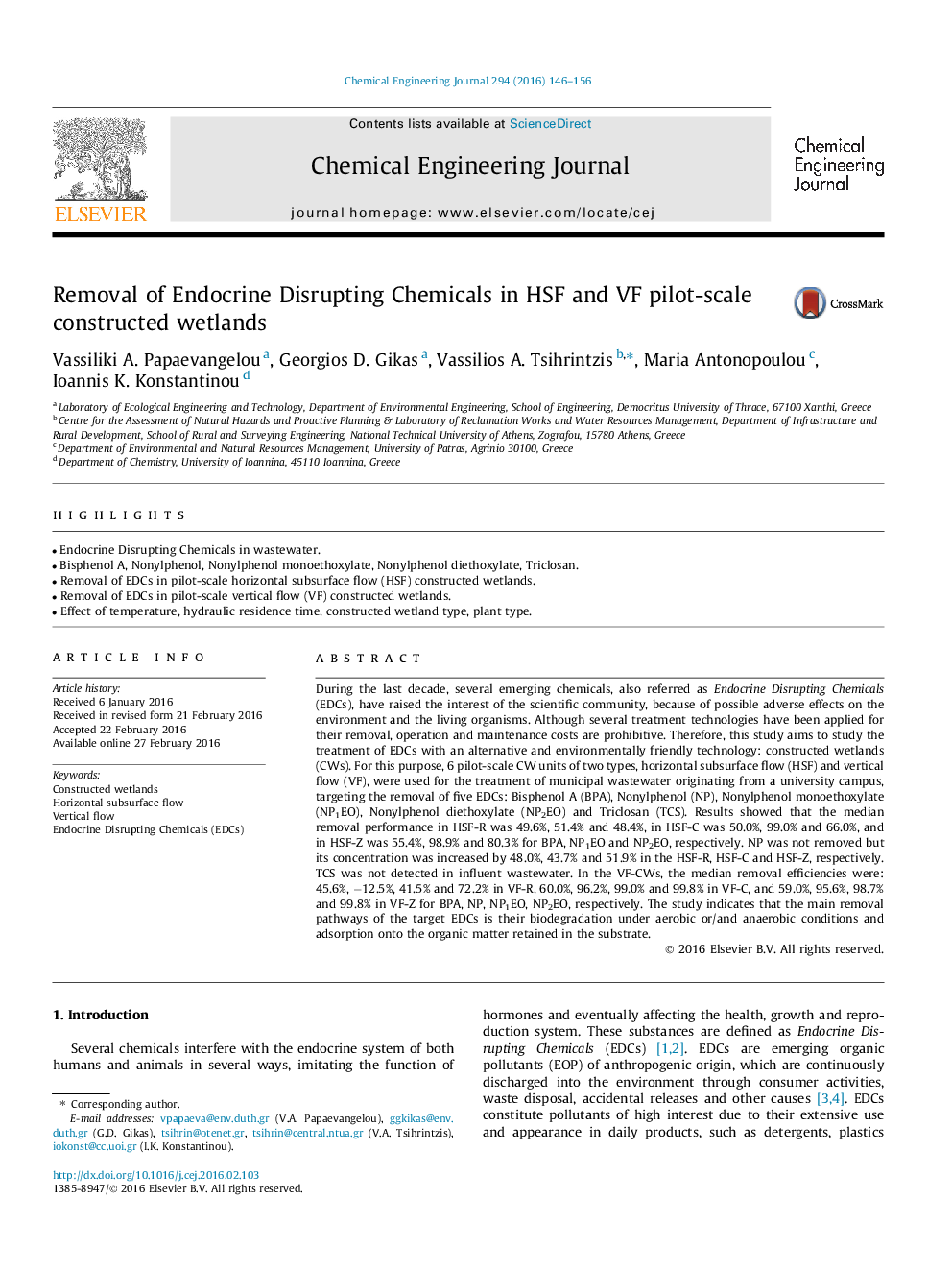| Article ID | Journal | Published Year | Pages | File Type |
|---|---|---|---|---|
| 145705 | Chemical Engineering Journal | 2016 | 11 Pages |
•Endocrine Disrupting Chemicals in wastewater.•Bisphenol A, Nonylphenol, Nonylphenol monoethoxylate, Nonylphenol diethoxylate, Triclosan.•Removal of EDCs in pilot-scale horizontal subsurface flow (HSF) constructed wetlands.•Removal of EDCs in pilot-scale vertical flow (VF) constructed wetlands.•Effect of temperature, hydraulic residence time, constructed wetland type, plant type.
During the last decade, several emerging chemicals, also referred as Endocrine Disrupting Chemicals (EDCs), have raised the interest of the scientific community, because of possible adverse effects on the environment and the living organisms. Although several treatment technologies have been applied for their removal, operation and maintenance costs are prohibitive. Therefore, this study aims to study the treatment of EDCs with an alternative and environmentally friendly technology: constructed wetlands (CWs). For this purpose, 6 pilot-scale CW units of two types, horizontal subsurface flow (HSF) and vertical flow (VF), were used for the treatment of municipal wastewater originating from a university campus, targeting the removal of five EDCs: Bisphenol A (BPA), Nonylphenol (NP), Nonylphenol monoethoxylate (NP1EO), Nonylphenol diethoxylate (NP2EO) and Triclosan (TCS). Results showed that the median removal performance in HSF-R was 49.6%, 51.4% and 48.4%, in HSF-C was 50.0%, 99.0% and 66.0%, and in HSF-Z was 55.4%, 98.9% and 80.3% for BPA, NP1EO and NP2EO, respectively. NP was not removed but its concentration was increased by 48.0%, 43.7% and 51.9% in the HSF-R, HSF-C and HSF-Z, respectively. TCS was not detected in influent wastewater. In the VF-CWs, the median removal efficiencies were: 45.6%, −12.5%, 41.5% and 72.2% in VF-R, 60.0%, 96.2%, 99.0% and 99.8% in VF-C, and 59.0%, 95.6%, 98.7% and 99.8% in VF-Z for BPA, NP, NP1EO, NP2EO, respectively. The study indicates that the main removal pathways of the target EDCs is their biodegradation under aerobic or/and anaerobic conditions and adsorption onto the organic matter retained in the substrate.
